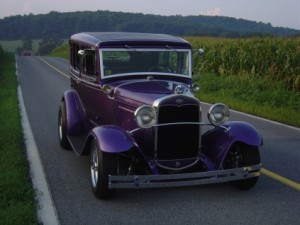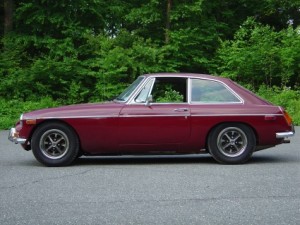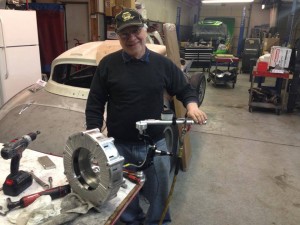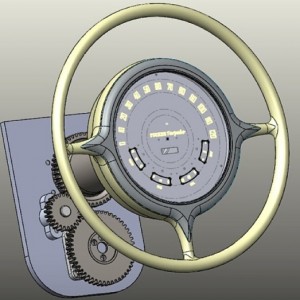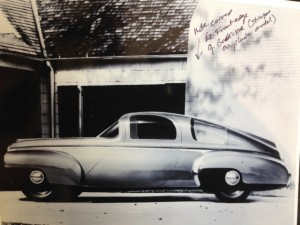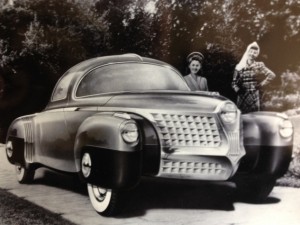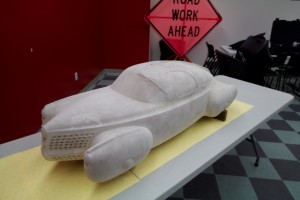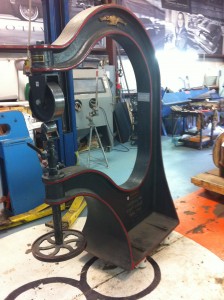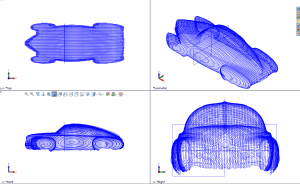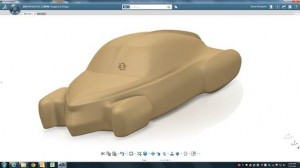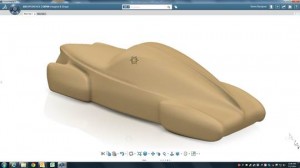SOLIDWORKS and the Tucker Torpedo
I was recently introduced to a really neat project by a colleague Sari Gerb. Sari is part of our Simulia product group and found out about this project by talking with Bob Cuneo. If you remember back at SOLIDWORKS World 2014 Bob was on stage at the general session and part of the Olympic Bobsled team along with Geoff Bodine. Well, Bob and Sari live in the same town in Connecticut and are friends. Bob told Sari about a project the Rob Ida Concepts group was embarking on; the creation of a car that was never built, the Tucker “Torpedo”. Sari thought this would be a great project for SOLIDWORKS to be involved in so that’s where I come.
I little background on me. I’m a car guy. Always have been and always will be. I have a 1931 Ford hot rod, a 1973 MGBGT and race a BMW Z3 in the SCCA with my buddy Kevin.
When Sari told me about this project I had to get involved 🙂
You may remember a movie made back in 1988 with Jeff Bridges playing Preston Tucker in Tucker: The Man and His Dream. Tucker produced a revolutionary car called the Tucker ‘48 named so because it was introduced in 1948. 51 prototypes were produced and all but 4 are known to be on the road or in museums.
It is a unique car with a bunch of innovative design features. The most recognizable feature is the “Cyclops Eye” headlight which turned with the steering wheel. A rear mounted engine, a roll bar integrated into the body design, a shatterproof windshield designed to pop out in a crash, a lockable parking brake to prevent theft, a safety “crash chamber” interior which was padded and free of obstructions and glove boxes placed in the doors instead of usual location. These features were unique for the time and some of them didn’t appear in cars until decades later.
Here’s what the ‘48 looks like:
Before the ‘48 was built Tucker had a concept car on the drawing board in 1946 called the “Torpedo”. Before Tucker got serious about the Torpedo he went out of business and never got the chance to build it. The furthest he got was producing some hand drawings, artist renderings and a plaster-of-Paris model. This is where Rob Ida Concepts comes in.
Bob and Rob Ida are a father and son team working out of their shop in Morganville, NJ. They’re great car guys and I’m humbled to be in their presence when we get together on Thursday nights. They have a great amount of history and accomplishments under their belt.
A little irony in this story is Bob’s father Joe was a Tucker dealer for one day in 1947. The next day Tucker went out of business and so did Joe’s Tucker dealership. But that didn’t stop Joe. He continued with his what is now Rob Ida Concepts.
So you can see the connection to Tucker cars Bob and Rob have. They have been building hot rods and specialty cars for years as you can see on their website: www.robidaconcepts.com. They also have been re-manufacturing the Tucker ‘48 and built several of them for their customers. So they know how to build a Tucker.
Not too long ago they were approached by one of their customers and asked to build the Torpedo. They thought it would be a great project and we know they are certainly up for the task.
Another notable person working on the Torpedo project is the Great Grandson of Preston Tucker, Sean Tucker. Talk about small worlds here. Sean is an automotive engineer working at Mack Truck in Allentown, PA and lives in Bethlehem, PA and I live in Fleetwood, PA. We’re about about 30 miles from each other.
Sean has been working on the design of the steering wheel assembly incorporating the original Preston Tucker “column-less” design:
Since the Torpedo was never built there wasn’t much to go on but drawings, renderings and the plaster of Paris model.
Here are some of the artist renderings:
And the plaster model:
The plaster model was scanned several years ago and was used to create the wooden “buck” used to form the body as seen in this picture:
To create the body panels Rob uses an English Wheel. This is a painstaking process of forming a flat piece of aluminum into a contoured body panel. To use an English Wheel you have to be a highly skilled craftsman and artist. The process is to roll the stock material back and forth between 2 rollers, one big and one small; this will stretch the material and induce a curved shape in the piece of stock. Here’s what that looks like:
Next step is to lay the piece on the buck and see how it fits and where modifications need to be made. Go back to the wheel and shape the piece accordingly then back to the buck. Repeat this process many, many times until the body piece fits precisely on the buck. Then go on to the next piece.
Another critical aspect of hand making a car body is getting it symmetrical. When you stand back from the front or rear both sides must look identical. That’s why you have to be a craftsman and artist in order to do this type of work and achieve the high quality Bob and Rob strive for.
To help with the design of the Torpedo I worked on modeling the car body while Sean was working on the steering wheel design. The first step was to use the scanned data as seen here to use as an aid to model the body using surfaces. Little did I know at the time the scanned data wasn’t going to be much help creating the surfaces for the body panels. The data looked good but upon closer examination the curves were comprised of a series of very small lines and not smooth curves. This is probably due to the scan taking place over 10 years ago and the process used at that time is unknown. But, all is not lost.
In order to get a 3d model of the body shape I turned to André Clemons. Dré was introduced to me by Sari. He’s a Technical Senior Manager at Dassault Systemes with a lot of experience designing automotive bodies using CATIA. Dré used the new 3D Experience Platform to produce a “virtual clay model” of the body shape using the Sub-D modeling functionality. Here’s what he produced:
Both Sean and I opened this same model in SOLIDWORKS so we both have a virtual model to work with. The next steps for me are to work with Dré on the details of the body shape and Sean will be working on the interior with its unique turntable for the seats. We’ll cover those projects in the next blog.




